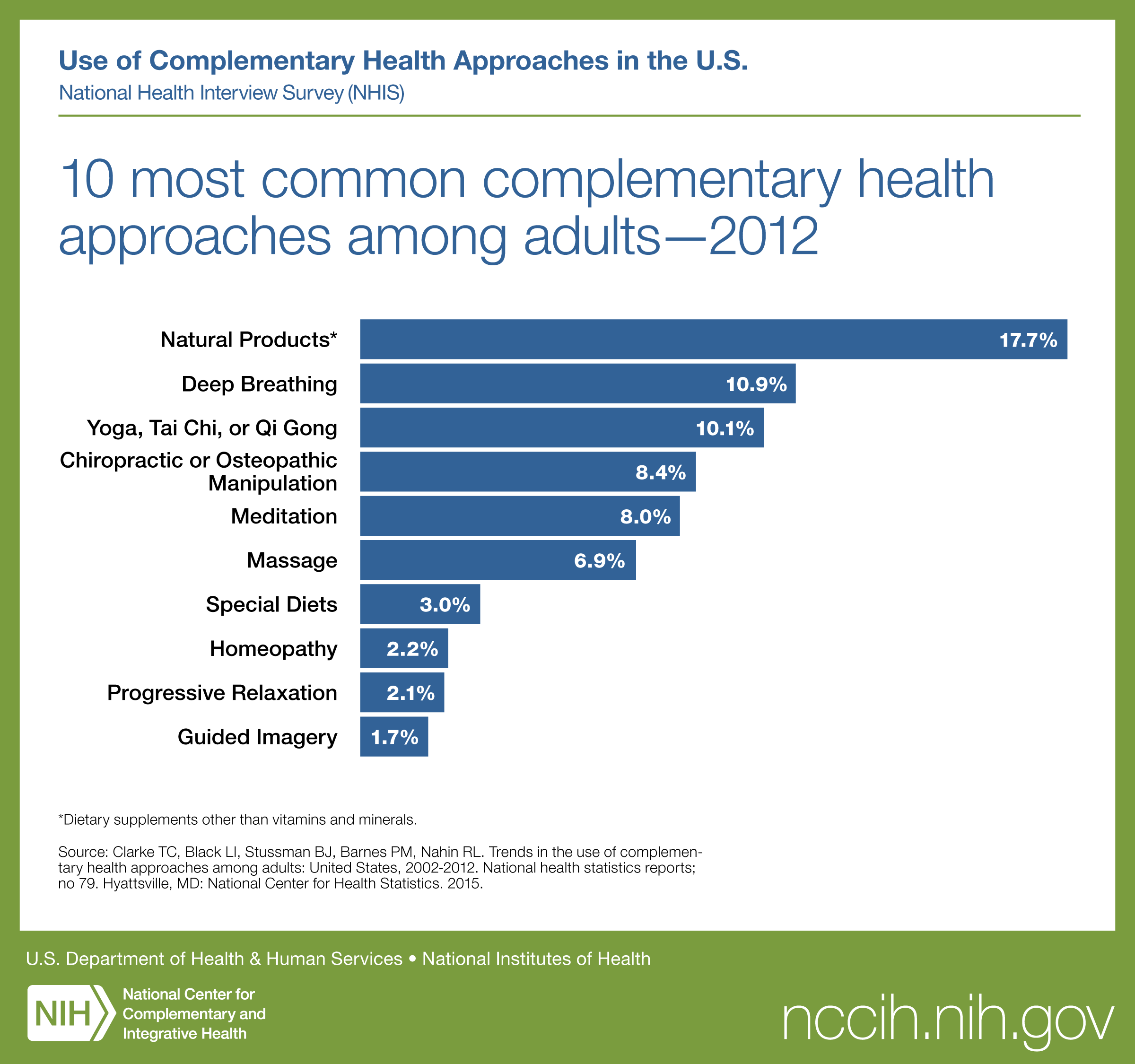10 Most Common Complementary Health Approaches Among Adults—2012

Horizontal bar graph from 2012 National Health Interview Survey depicting the most common complementary health approaches among adults.
Natural products*: 17.7 percent
Deep breathing: 10.9 percent
Yoga, tai chi, or qi gong: 10.1 percent
Chiropractic or osteopathic manipulation: 8.4 percent
Meditation: 8.0 percent
Massage: 6.9 percent
Special diets: 3.0 percent
Homeopathy: 2.2 percent
Progressive relaxation: 2.1 percent
Guided imagery: 1.7 percent